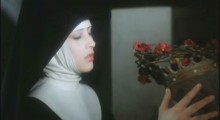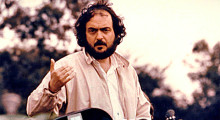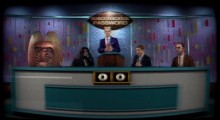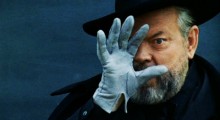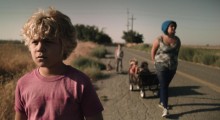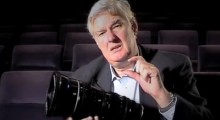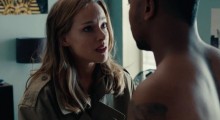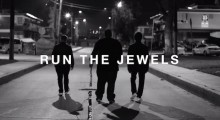Filmmaker Videos
-
Trailer Watch: Me and Earl and the Dying Girl

I love this movie and just finished editing a great conversation with director Alfonso Gomez-Rejon and screenwriter Jesse Andrews for the next print issue of Filmmaker. It won Sundance, you probably heard, and, if you’re a Brian Eno fan, well, it’s got a lot of his best songs in it. (And two in the trailer!) For now, I’m not going to say much more than that, but check it out.
-
The Sony Action Cam Can Make Movies Never Seen Before (Sponsored Post)

Sony’s Action Cam line provides a competitive alternative to GoPro for filmmakers looking to expand their production resources. To showcase the camera’s capabilities, Sony’s launched a series of films demonstrating how filmmakers can use the Action Cam to make movies “never before seen.” More than 20 will eventually be unveiled on YouTube and Sony’s products website, where you can find more information about the making of each film. Above, check out Charles Young’s Paperports, which documents his work with intricate miniature paper architecture. The FDR-X1000V model offers both 4K and 2K resolution. Some notable technical specs regarding resolution and frame rate: 4K: […]
-
Watch: Objects and Objectification in the Films of Walerian Borowcyzk

Currently ongoing at the Film Society of Lincoln Center is the Walerian Borowcyzk series, Obscure Pleasures, and Film Comment Digital Editor Violet Lucca fashioned a nice film essay to supplement the occasion. The above video considers how Borowcyzk’s animation background influenced his treatment of objects, which he often imbues with lifelike or plot-reflecting properties. In the opening film of the series, The Strange Case of Dr. Jekyll and Miss Osbourne, a phonograph is partially responsible for the third act climax. Lucca also considers the filmmaker’s disregard for shot-reverse-shot construction and his dedication to portraying female sexuality in a series of fairly NSFW clips.
-
How Stanley Kubrick Shot Barry Lyndon Using Natural Light

Earlier this week we posted this video with Joe Dunton discussing the lenses used by Stanley Kubrick in his films. (Note: unfortunately, that previous video has been removed by the uploader.) Here’s the next in a Kubrick cinematography playlist: various cinematographers on his use of the BNC camera and Zeiss f/0.7 lenses to shoot Barry Lyndon in natural light. (As a reader below notes, this is an excerpt from Stanley Kubrick: A Life in Pictures, which is recommended viewing.) Previously at Filmmaker, Jim Hemphill sat down with three of the film’s actors for a discussion of the making of that […]
-
Watch: Chris Landreth’s Subconscious Password

Conde Nast’s short form original content and acquisitions site, The Scene, has just released the fantastic short Subconscious Password, from Academy Award winning animator Chris Landreth. Landreth stars in the Sundance 2014 premiering film as a man who has trouble recalling an acquaintance’s name at a cocktail party, and retreats into an inner mind game show in an attempt to drum up the correct direct address. Though you can’t quite enjoy the 3-D film as it was meant to be seen online, it’s still a rather inventive head trip.
-
Watch: Tony Zhou on F For Fake and How to Structure a Film

“‘Therefore’ and ‘but;’ ‘meanwhile’ and ‘back at the ranch.’” Those are two storytelling axioms to keep in mind, suggests Tony Zhou, when structuring both a film and a video essay. Drawing on Orson Welles’ F For Fake, as well as the words of Alfred Hitchcock and Trey Parker, Zhou demonstrates how the juggling of parallel ideas and story lines are essential to any convincing film or argument.
-
Five Questions with God Bless the Child Directors Robert Machoian and Rodrigo Ojeda-Beck

Winner of the Best Narrative Feature award at the Atlanta Film Festival over the weekend, Robert Machoian and Rodrigo Ojeda-Beck’s God Bless the Child is a naturalistic, quotidian portrait of five children roaming the streets and marshes of Davis, California after their mother skips town. Machoian and Ojeda-Beck capture their characters with both formal remove and striking intimacy, as their interplay suggests the nature of young bodies left to their own devices. Though the Grahams — Harper, Elias, Arri, Ezra, and Jonah — exist in the film without any parental supervision, all five happen to belong to co-director Machoian, a relation which the pair were […]
-
Watch: A Guide to Stanley Kubrick’s Lenses

April 3: 2015: EDITOR’S NOTE. We apologize, but this video is no longer viewable on YouTube. In this 12-minute video, legendary British camera innovator Joe Dunton (you can read up on him here) identifies every lens used by Stanley Kubrick and how they work. Learn about the Angénieux zoom lens that was the most popular in the world from 1966 to the early ’70s, more about the difficulties of shooting natural light on Barry Lyndon and many other aspects of the director’s technically meticulous productions.
-
Trailer Watch: Julius Onah’s The Girl is Trouble

Executive producer Spike Lee’s name is all over this trailer, but I’m excited to finally see The Girl is Trouble because of its writer/director, Julius Onah, who I selected as one of our 25 New Faces way back in 2010. At the time of his selection, Onah was prepping this movie, and since its shooting, he became attached to a David Koepp-scripted thriller starring Jared Leto. The trailer seems a bit of a standard issue “guns and a girl” thriller, but I read the original script, which married a film noir storyline with a smart take on the Lower East […]
-
Short Film: Run the Jewels/A.G. Rojas Collaboration, “Close Your Eyes (And Count to F*ck)”

A.G. Rojas, who two years ago we put in our 25 New Faces list, directs this provocative video from Run the Jewels depicting a prolonged, punch-drunk, balletic street fight between a cop (Shea Whigham) and a young black man (Keith Stanfield). Without dialogue, and just through the subtleties of their choreographed movement, the piece moves away from realism and towards a theatrical space, adding new levels of complex meaning to the track’s outraged aggression. If you start watching, then make sure to watch until the end. From The Skinny: Explaining the clip, Rojas said: “When Run The Jewels sent me […]


